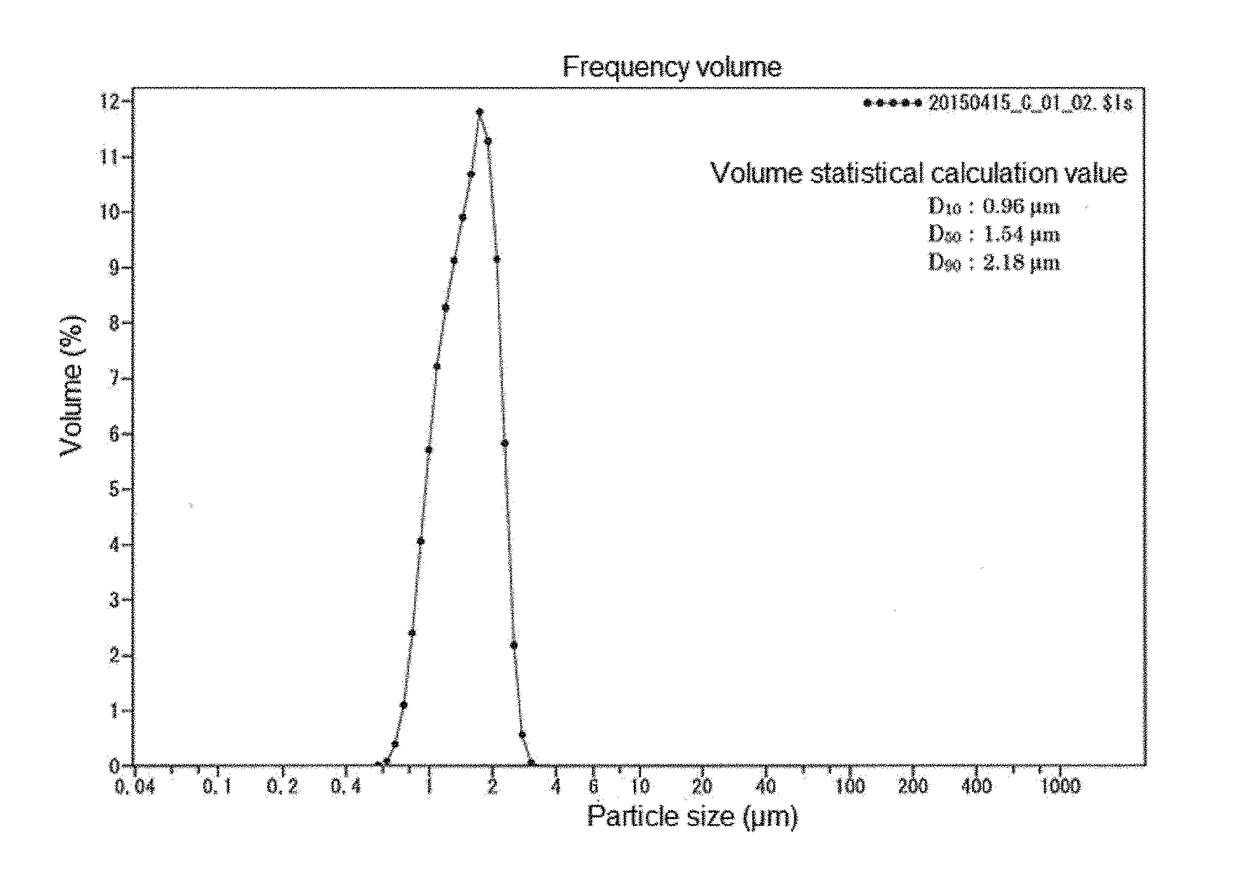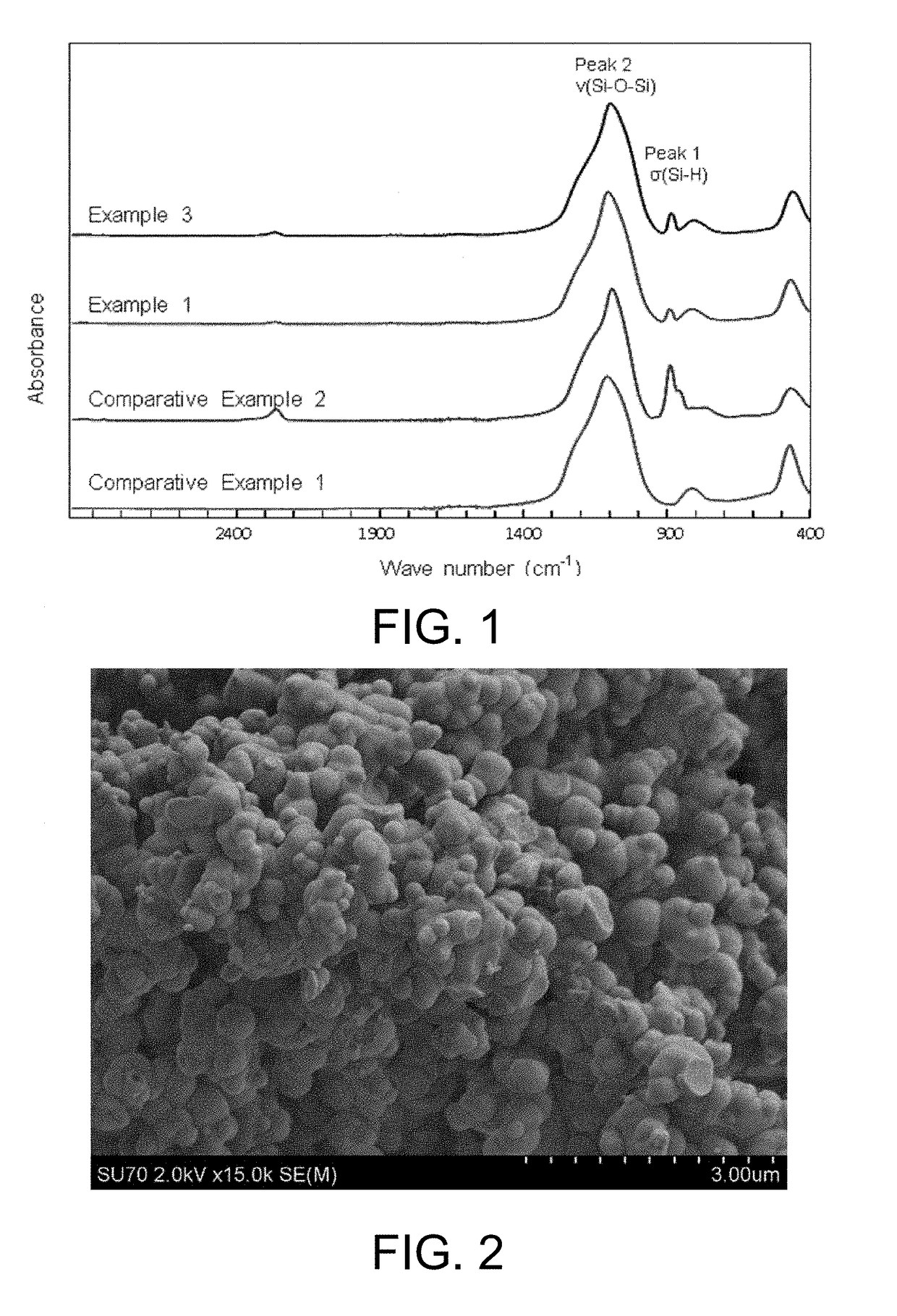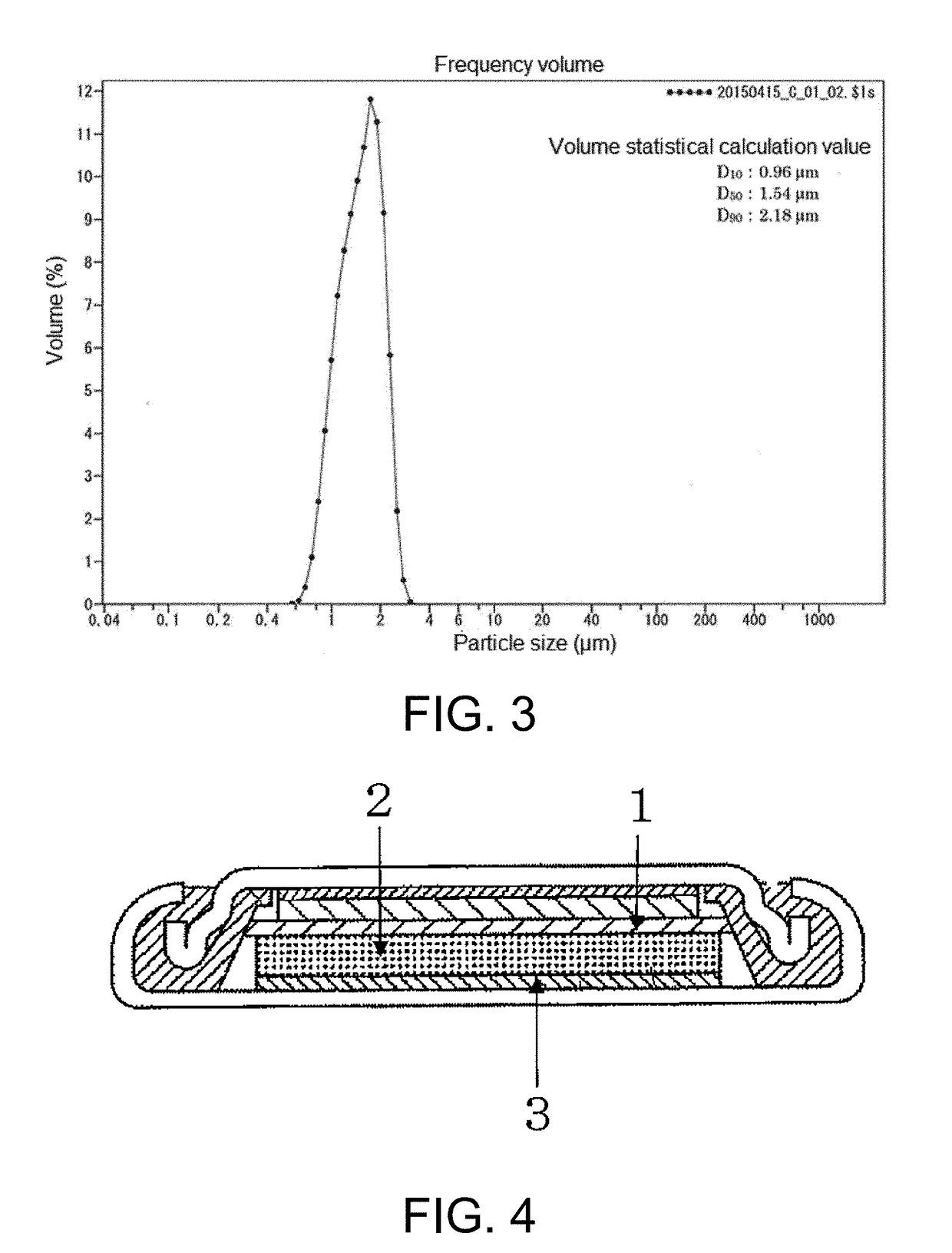Negative electrode active material for lithium ion secondary battery and method for producing same
a lithium ion secondary battery and active material technology, applied in the direction of electrochemical generators, cell components, cell components, etc., can solve the problems of low charge and discharge efficiency, lithium metal is sensitive to heat, and the problem of commercialization has remained, so as to improve the capacity retention ratio, improve the charging and discharging capacity, and reduce the cost
- Summary
- Abstract
- Description
- Claims
- Application Information
AI Technical Summary
Benefits of technology
Problems solved by technology
Method used
Image
Examples
synthesis example 1
[0114]Into a 300 mL three-neck flask, 96 g of pure water was charged, and then an atmosphere inside the flask was replaced by nitrogen. Then, 16.0 g (118 mmol) of trichlorosilane was added dropwise thereto at 20° C. under stirring while the mixture in the flask was ice-cooled. After completion of dropwise addition, a hydrolysis reaction and a condensation reaction were carried out at 20° C. for 2 hours while the mixture was stirred.
[0115]After elapse of a predetermined reaction time, a reactant was filtered using a membrane filter (pore size: 0.45 micrometer, hydrophilic), and a solid was collected. The solid obtained was dried under reduced pressure at 80° C. for 10 hours to obtain 6.03 g of hydrogen silsesquioxane polymer (1).
synthesis example 2
[0116]Into a 3 L separable flask, 12.2 g (120 mmol) of hydrochloric acid having a 36 wt % concentration and 1.19 kg of pure water were charged, and 167 g (1.37 mol) of trimethoxysilane (Tokyo Chemical Industry Co., Ltd) was added dropwise thereto at 25° C. under stirring. After completion of dropwise addition, a hydrolysis reaction and a condensation reaction were carried out at 25° for 2 hours while the mixture was stirred.
[0117]After elapse of a predetermined reaction time, a reactant was filtered by a membrane filter (pore size: 0.45 micrometer, hydrophilic), and a solid was collected. The solid obtained was dried under reduced pressure at 80° C. for 10 hours to obtain 76.0 g of hydrogen silsesquioxane polymer (2).
example 1
(Preparation of Silicon Oxide)
[0118]On an alumina boat of an SSA-S grade, 20.0 g of hydrogen silsesquioxane polymer (1) obtained in a manner similar to Synthesis Example 1 was placed, and then the boat was set in a vacuum purging tube furnace KTF43N1-VPS (made by Koyo Thermo Systems Co., Ltd.). Then, as heat treatment conditions, while an argon gas was fed at a flow rate of 250 mL per minute under an argon gas atmosphere (high-purity argon gas: 99.999%), and temperature was increased at a rate of 4° C. per minute, and calcination was carried out at 800° C. for 1 hour to obtain silicon oxide.
[0119]Then, the silicon oxide obtained was disintegrated and ground with a mortar for 5 minutes, and the resulting material was classified using a stainless steel sieve having an opening of 32 micrometers to obtain 18.9 g of granular silicon oxide (1) having a maximum particle size of 32 micrometers.
[0120]The results of infrared spectrometry and an elemental analysis of silicon oxide (1) obtained...
PUM
| Property | Measurement | Unit |
|---|---|---|
| temperature | aaaaa | aaaaa |
| temperature | aaaaa | aaaaa |
| temperature | aaaaa | aaaaa |
Abstract
Description
Claims
Application Information
 Login to View More
Login to View More - R&D
- Intellectual Property
- Life Sciences
- Materials
- Tech Scout
- Unparalleled Data Quality
- Higher Quality Content
- 60% Fewer Hallucinations
Browse by: Latest US Patents, China's latest patents, Technical Efficacy Thesaurus, Application Domain, Technology Topic, Popular Technical Reports.
© 2025 PatSnap. All rights reserved.Legal|Privacy policy|Modern Slavery Act Transparency Statement|Sitemap|About US| Contact US: help@patsnap.com



